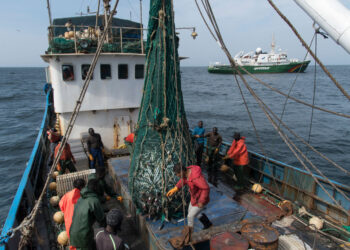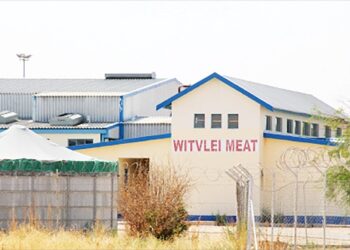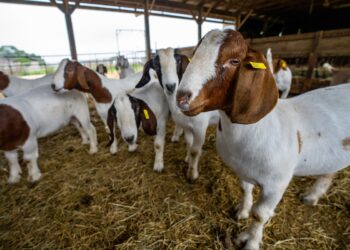
The Namibian Ports Authority (Namport) needs at least N$26.2 billion to be sourced through public-private partnerships (PPP) to expand the country’s ports for the emerging oil and gas sector, it has been revealed.Â
NamPort has set its sights on several significant projects that span both the short and long term with some expected to span over 30 years amongst other projects across the coast of the country.Â
This comes after Namport’s CEO Andrew Kanime is leading a plan to revamp the nation’s port infrastructure to elevate Namibia’s role in the regional logistics landscape.Â
The Brief can exclusively reveal that several notable projects have been brought to the forefront including the expansion of the Lüderitz Port, which is expected to necessitate a blended financing approach, totalling approximately N$2 billion.Â
Furthermore, the Angra Point initiative, “spanning a 30-year timeline, envisions the development of multiple terminals in response to market demand”.Â
The Angra Point initiative is currently estimated to cost around N$10 billion.
Kanime said a significant focus of this expansion endeavour is the Walvis Bay North Port One-Stop-Shop Supply Base.Â
“This project operates under a public-private partnership (PPP) model and is anticipated to require an investment ranging from N$2 to N$4 billion,” according to the port’s latest data.Â
Furthermore, NamPort says the commitment to PPP structures extends to the establishment of Liquid Mud Plants, requiring an investment of approximately N$200 million.
“The proposed Graving Dock at the Port of Walvis Bay North Port, which could involve an expenditure ranging from N$5 to N$10 billion,” the port company further reveals.
Speaking at a recent industry conference, CEO Kanime warned that the country’s ports may face capacity challenges in gearing up for the developmental phase of the oil and gas sector.
Kanime said a medium-sized offshore corporation requires 5 to 10 hectares of land, with requirements potentially scaling up to 100 to 200 hectares depending on industry development.
“If the industry moves towards the development phase, there will be a requirement for us to develop new infrastructure,” he said.
Kanime also emphasised the need for a balanced approach, ensuring the continued support of industries such as fishing, diamond mining, and mineral ore processing alongside the development of new cargo facilities.
The CEO highlighted the specific challenges and opportunities posed by the port of Lüderitz, describing it as smaller but strategically located.
“At the moment,” he stated, “Total Energies is supported from Lüderitz, whereas players such as Shell and Galp are being supported from the port of Walvis Bay.”
However, Kanime acknowledged that while Lüderitz may not be suitable for the development phase, further investment could see it play a role in the industry’s future.
Medium-term plans include extending the current quay length at Lüderitz by 200 to 300 meters, slated to commence next year, to support exploration and appraisal activities.
“Long-term aspirations involve constructing a new port in the adjacent bay, known as Angra Point, which is a more extended and complex project, potentially linked to the burgeoning green hydrogen industry,” he said.
In terms of infrastructure requirements, Kanime explained that Walvis Bay is better positioned to support the industry’s needs due to the existence of supporting industries, including engineering services.
This allows for more scalable growth compared to Lüderitz, which lacks similar infrastructure.
Meanwhile, despite engineering possibilities, Kanime ruled out new ports in Oranjemund and Elizabeth Bay at this stage due to significant costs and environmental challenges.
Â
Â
Â











